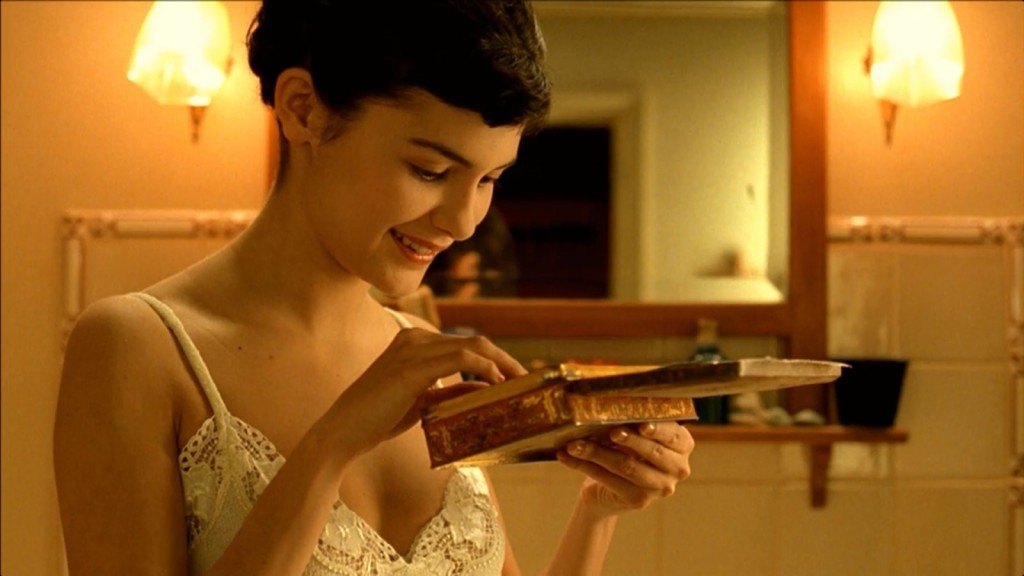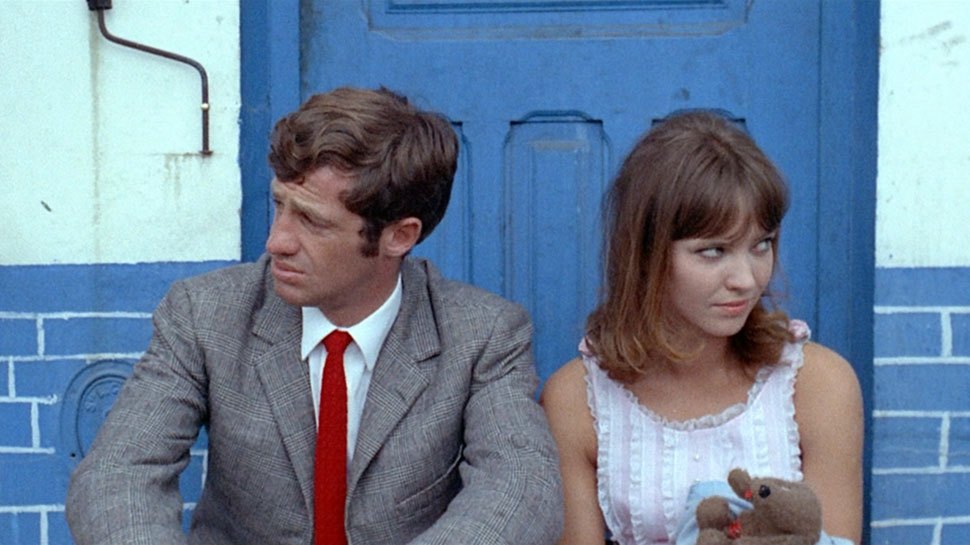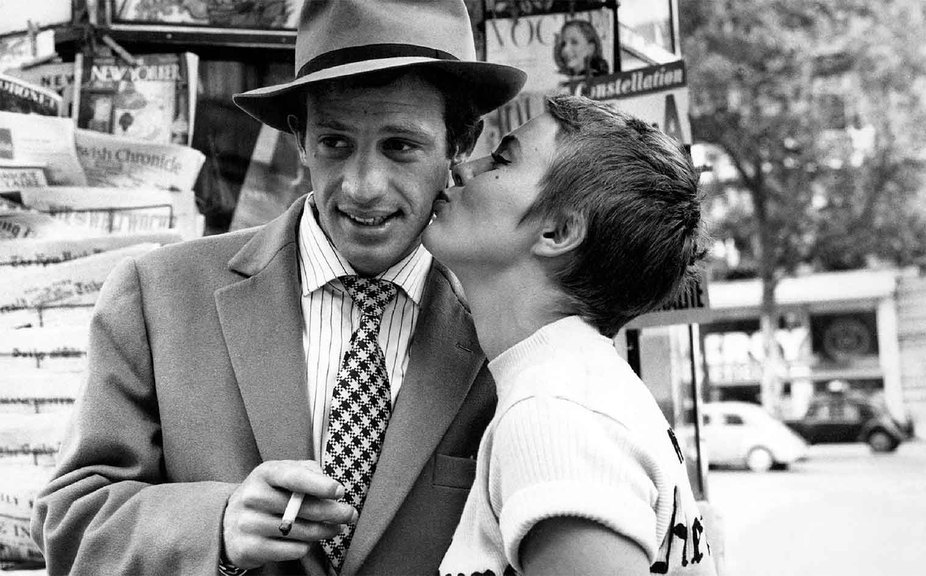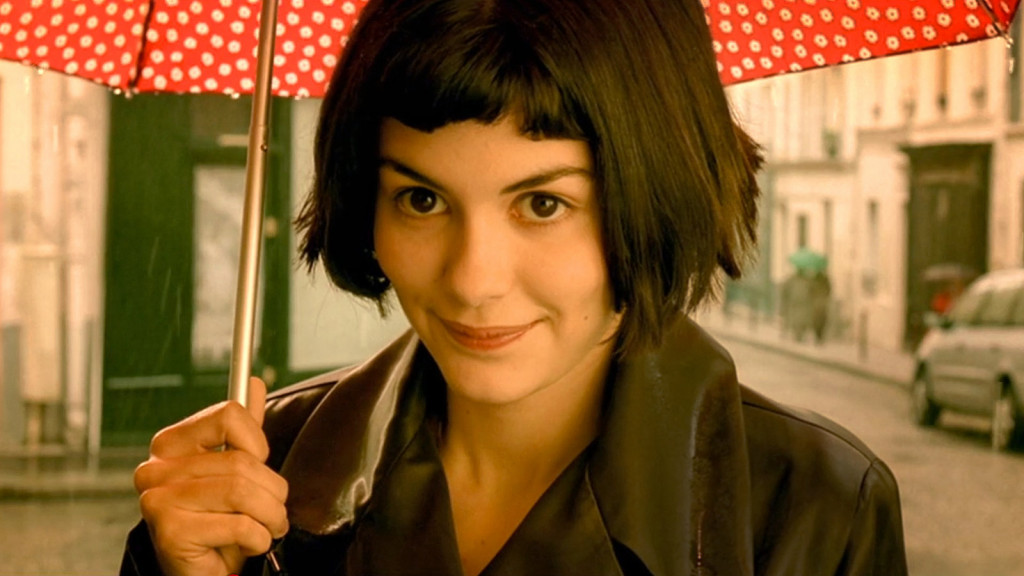Enough said and discussed about Hollywood! Now let us, for a change, look at something else. While die-hard Hollywood fans might scoff at such a blunt statement, the fact remains that a lot of us haven’t really explored anything beyond the glitzy world of Los Angeles. Does the word French cinema ring a bell? If it does, it might be helpful to understand that the movie industry in France has traditionally produced some of the finest pieces of global cinema. In fact, the revered French New Wave, a movement that revolutionized the concept of cinema back in the sixties, imparted a new dimension to the medium.
Overall, French movies have always been known to be quality products of cinema. In this article, we list down the top French movies of all time. Again, this list is democratically open to discussions and debates. You can also watch some of these best French movies on Netflix, Hulu or Amazon Prime.
13. Three Colors: Blue (1993)

Krzysztof Kieslowski is one of the greatest filmmakers of all time. And it’s sad to think that the man died when he was at his absolute peak. While he has directed several acclaimed works throughout his career, The ‘Three Colors’ trilogy remains his most famous work and ‘Blue’ his most emotional and ambitious film. ‘Blue’ follows a woman named Julie (Juliette Binoche) who is devastated after an accident took the lives of her husband and their young daughter. She tries to isolate herself away from the surroundings and the people she knows in order to forget the tragedy and evade the pain. But as she begins her journey, she realizes that it’s impossible to live in a world without human interaction and bonding.
Binoche is brilliant in the lead role and delivers what could arguably be considered one of the greatest acting performances of the 90s. Like all great actors, she manages to understand the vision of the filmmaker and then gets into the skin of the character with astonishing ease and elegance. Music is another important aspect of the film that plays a key role in driving the narrative forward. Almost every scene is defined by music — or the lack of it. One of the most famous scenes in the film is of course the coffee scene. A man plays a haunting piece on a flute outside a restaurant where Julie is having coffee. Kieslowski focuses on the sugar cube absorbing the coffee, while the music plays in the background, for about 6 seconds. It is one of the most meditative cinematic experiences you’ll ever have.
It’s a shame that Kieslowski’s work still remains largely unexplored by film lovers outside of Europe, and it’s with lists like these that we hope we could reach out to everyone and help people explore the work of a true master who deserves to be talked about in the same breath as Bergman or Tarkovsky.
12. The Wages of Fear (1953)

Dark and thematically rich, Henri-Georges Clouzot’s ‘The Wages of Fear’ could be considered to be an existential masterpiece and is one of the earliest realist thrillers. In essence, the movie chronicles the tale of four men employed to extinguish the fire in a South American oil well owned by an American company. In that pursuit, they are sent with a couple of trucks of Nitroglycerine without adhering to any safety measures. The ingrained violence in the movie is only representative of the decay that has been slowly but surely afflicting the human civilization. It has been consistently ranked as one of the finest films of the fifties.
Read More: Best Visually Stunning Movies of All Time
11. Au Hasard Balthazar (1966)

Ranked as one of the greatest cinematic works of the twentieth century, Robert Bresson’s magnum opus ‘Au Hasard Balthazar’ (1966) is a peculiar work of art to say the least. It narrates the story of a donkey and the people around it. The religious imageries shown in the film are so stark that people start questioning humanity in itself. The movie’s unique aesthetic elements were particularly appreciated. Although it primarily shows the life of a donkey, it in many ways talks about life and its fallout. Some critics described the movie as a representation of this world in a nutshell.
Read More: Best Screenwriters of All Time
10. Jules and Jim (1962)

Based on a semi-autobiographical novel by French avant-garde author Henri-Pierre Roché, François Truffaut’s ‘Jules and Jim’ is a definite milestone in the history of international cinema. A movie that inspired numerous critical studies, it portrays a love triangle around the time of the First World War. A unique romantic drama, ‘Jules and Jim’ established Truffaut as one of the doyens of French cinema. Known for adopting a rather unique style of storytelling, Truffaut took the help of multiple elements including newsreel footage, still photographs and montages. The movie is today regarded as one of the founding pillars of the French New Wave.
Read More: Best Travel Movies of All Time
9. La Haine (1995)

Directed by Mathieu Kassovitz, ‘La Haine’ is a movie that successfully breaks all the barriers of traditional filmmaking. With an outrageous plotline, it has succeeded in cementing its place in the annals of cinematic eternity. Essentially a crime drama film, it follows the lives of three young friends after a riot in the suburbs of Paris. Known for its realistic portrayal of social issues, the movie was widely applauded by critics worldwide. It paints a rather raw picture of contemporary France and its multiple social ills.
Read More: Best Intelligent Movies Ever Made
8. Les Diaboliques (1955)

One of the original psychological thrillers with classic elements from the horror genre, Henri-Georges Clouzot’s classic ‘Les Diaboliques’ was an inspiration behind Alfred Hitchcock’s ‘Psycho’ (1960). The plot revolves around the supposed murder of a man by his wife and his mistress and the strange incidents that follow the murder. An intense cinematography and very tight editing add to the mystery that slowly builds up during the course of the movie. The ending has been hailed as a cinematic wonder and is arguably the best of its kind. It shows that the man had actually conspired with his mistress to kill his wife utilizing fear psychosis following his fake death. However, the twist comes when the wife is also shown to be still at large even after her death, real or not!
Read More: Best Gangster Movies of All Time
7. Amélie (2001)

A crazy movie by Jean-Pierre Jeunet, ‘Amelie’ represents everything innovative about cinema. While dealing with the central motif of loneliness, the film ventures into the troubled life of contemporary Parisians. It tells the story of a young waitress who ventures out to positively change the lives of people around her while battling to reconcile with her own solitude. Much unlike other movies on the theme of solitude, it gives a quirky and pleasant feel to the audience through the employment of bright humour and romance.
Read More: Best Women Directed Movies of All Time
6. Vivre Sa Vie (1962)

The most humane film that Jean-Luc Godard has ever made, ‘Vivre Sa Vie’ is one of the most heartbreaking movie experiences I’ve ever had. Those who believe that Godard is cold and cannot come up with something genuinely emotional must watch this. The final image of Anna Karina’s character lying on the road, dead, has to be one of the saddest scenes I’ve ever seen. The film tells the story of a young Parisian woman who turns to prostitution after failing to realize her dream of becoming an actress. Karina is stunning in the lead role, delivering a performance of such heartbreaking honesty that leaves you utterly devastated and shaken, even days after watching the film.
Godard forces us to confront the devastating realities of life around us that we always look away from. His approach here is quite objective and never really tries to manipulate viewers with emotions. You as a viewer are not made part of the story but are forced to observe Nana’s life, and that is one of the reasons why the film works on so many levels. It’s an unflinching look at a deeply depressing life and we’re made to realize our helplessness — both as a viewer and as a fellow human being.
5. Pierrot Le Fou (1965)

The great Chantal Akerman, arguably the finest feminist filmmaker of all time, once said that she decided to become a filmmaker after watching Jean-Luc Godard’s ‘Pierrot Le Fou’, at the age of 15. That is the power of art; it can hit you out of nowhere and change your life forever. Godard was never happy with the language of cinema. And he continues to push the limitations of the medium at the age of 88! ‘Pierrot Le Fou’ was one of his many works that redefined filmmaking back in the 60s.
When I first saw the film, it infuriated me in ways I couldn’t possibly describe. ”The sheer nerve this man has to toy with our minds”, I thought. But for some strange reason, I kept thinking about the film for days and revisited it, and started liking it even more. Today, I consider the film to be one of my absolute favorites. What changed for me was my perspective on Godard. I have always believed that in order to understand the works of auteur filmmakers, one needs to have a deeper understanding of their personalities, and their perspectives on life and various other things. ‘Pierrot Le Fou’ is one of Godard’s greatest works and is, in my opinion, far more ambitious than ‘Breathless’. His use of color, pop culture references, breaking the fourth wall — everything that defines Godard’s attitude and style of filmmaking can be seen in the movie. It is a film that anyone who aspires to become a filmmaker must watch and learn from.
4. Hiroshima Mon Amour (1959)

One of the earliest movies to use nonlinear narration, Alan Resnais’s ‘Hiroshima Mon Amour’ is a profoundly emotional piece of art. It crafts hope with the help of despair and it violently shakes our conscience. With innovative cinematic techniques such as the usage of flashbacks and metaphorical physiological ascriptions, the movie retells the horrors of the Second World War and the resultant nuclear warfare. ‘Hiroshmia Mon Amour’ is today considered to be one of the finest pieces of the French New Wave.
Read More: Best Inspirational Movies of All Time
3. Le Samouraï (1967)

Acclaimed for being one of the finest examples of non-American crime movies, ‘Le Samouraï’ essentially chronicles the story of a professional killer trying to create an alibi for himself after murdering the owner of a nightclub. Directed by Jean-Pierre Melville, this French-Italian Neo-noir film was ranked by Empire magazine as the 39th best movie of world cinema in its list of 2010. Starring Alain Delon in the lead role, the film is said to have influenced many future movies. It has very few dialogues but the ones that are there remain etched in our memories forever.
Read More: Best Psychopath Movies of All Time
2. Breathless (1960)

The maiden feature-length venture by Jean-Luc Godard, the poster boy of the French New Wave, ‘Breathless’ went on to become one of the most influential movies of all time. Chiefly known for its unconventional jump cuts and other innovative techniques, the film narrates the story of a young criminal and his beautiful girlfriend. The film, since the time of its release, acquired a cult status amongst youngsters and has been regularly ranked as one of the finest creations of French Cinema. The Sight and Sound Directors’ Poll placed it as the 11th best film of all time in 2012.
‘Breathless’ revolutionized cinema in a way very films have. It had a unique style, attitude, and a distinctive language that was hitherto unheard of in cinema. The film paved the way for an entire new generation of filmmakers and inspired them to push the boundaries of cinema. It is natural to think what’s so cool about this film. But one needs to understand the context and know more about its filmmaker in order to truly get an idea about the iconic status of the film. We saw Quentin Tarantino explode on to the seen with ‘Pulp Fiction’ in 1994; we saw Wong kar-wai play with the language of cinema in ‘Chungking Express’, ‘Fallen Angels’ and ‘Days of Wild’. But it was Godard who made it look cool to defy cinematic traditions with ‘Breathless’ in 1960. So it was, in many ways, more of a statement.
Jean Seberg as Patricia Franchini delivers one of the sexiest film performances of all time. Though Jean Paul-Belmondo is amazing in the lead role, it’s Seberg who defines the tone of the film and embodies the attitude that people would go on to associate with the film in the years to come. It is difficult to imagine cinema without ‘Breathless’ and the man behind it. And we can only hope that generations will continue to get inspired by it and do what Godard says with this film — Go out there and break the rules!
Read More: Best Murder Mystery Movies of All Time
1. The 400 Blows (1959)

‘The 400 Blows’ is essentially about juvenile and adolescent delinquency that is often driven by societal and parental neglect. Not only did this film put the nascent French New Wave on a firm footing but also projected François Truffaut as the brand new face of contemporary cinema. Distinctly autobiographical in nature, Truffaut’s own childhood was troubled and on similar lines. The film flows like a river and takes the audience along a journey of hope, despair, empathy and even sheer anger. A truly sincere and deeply personal piece of work, Truffaut dedicated it to his spiritual father and internationally acclaimed film theorist André Bazin. It is now considered to be one of the greatest movies of all time.
Read More: Best Directors of All Time, Ranked


You must be logged in to post a comment.